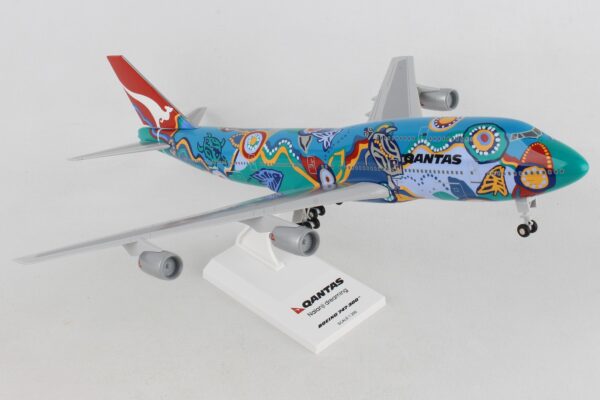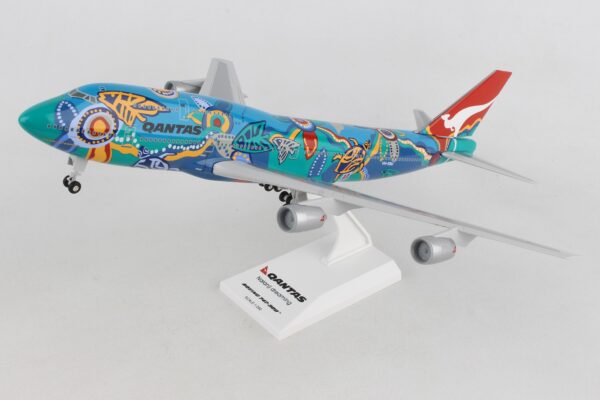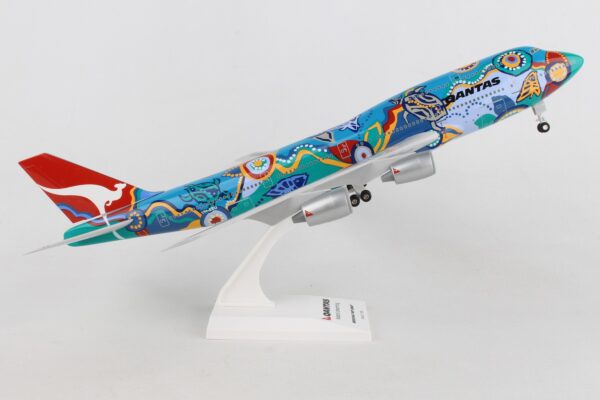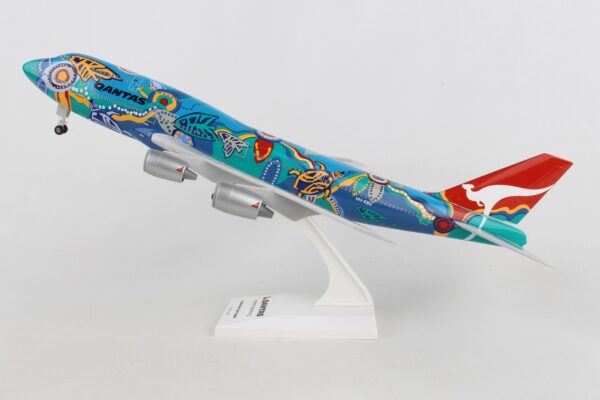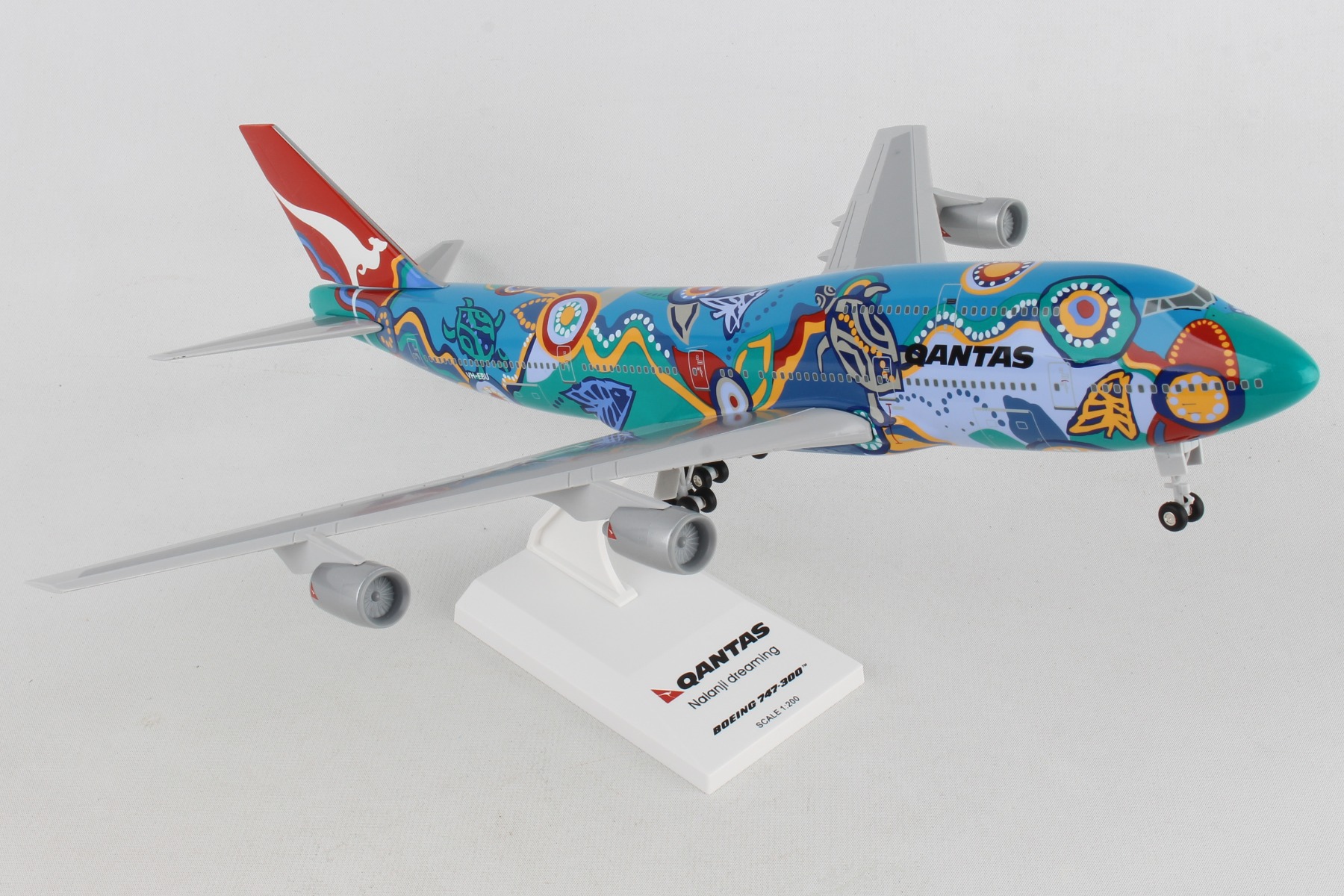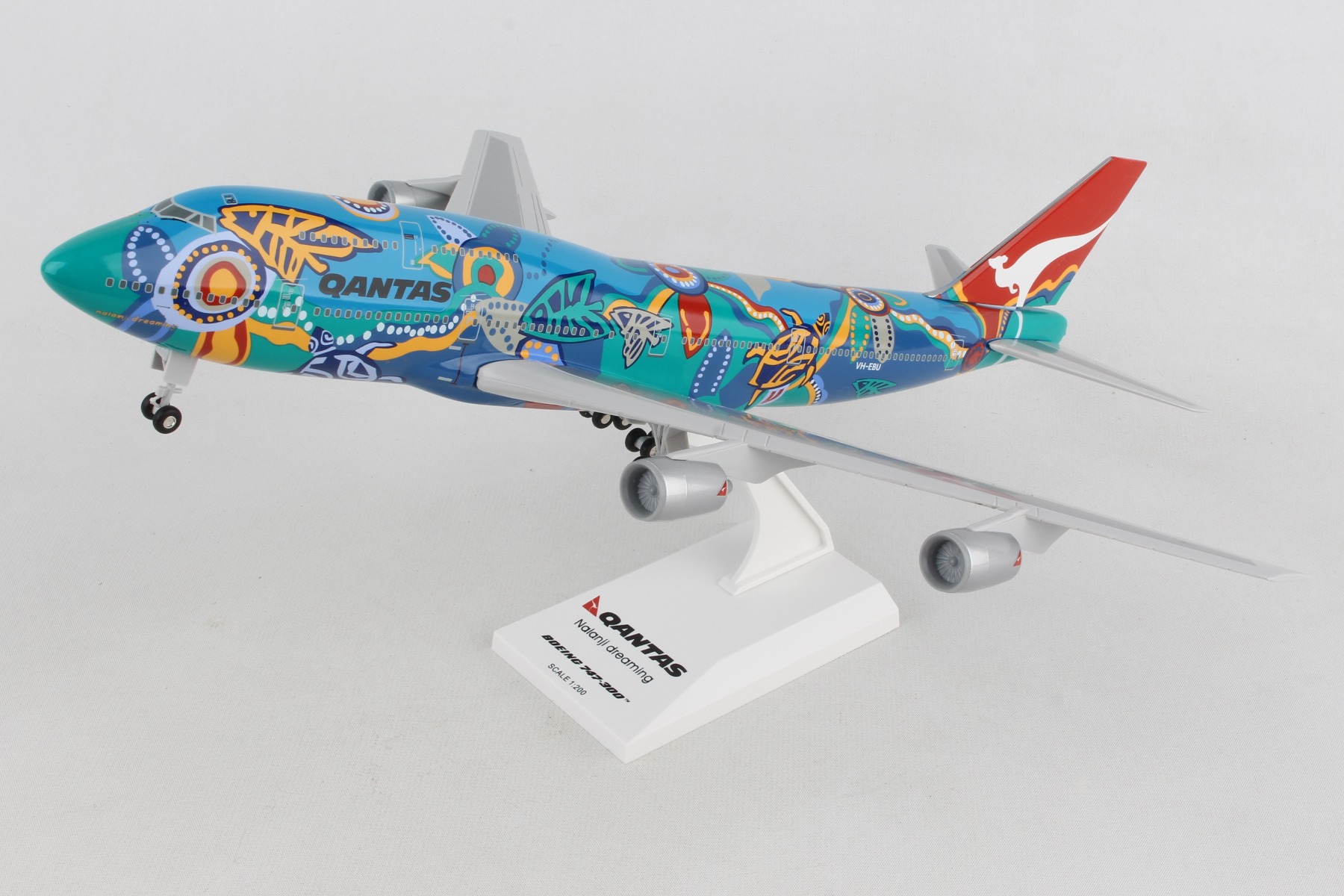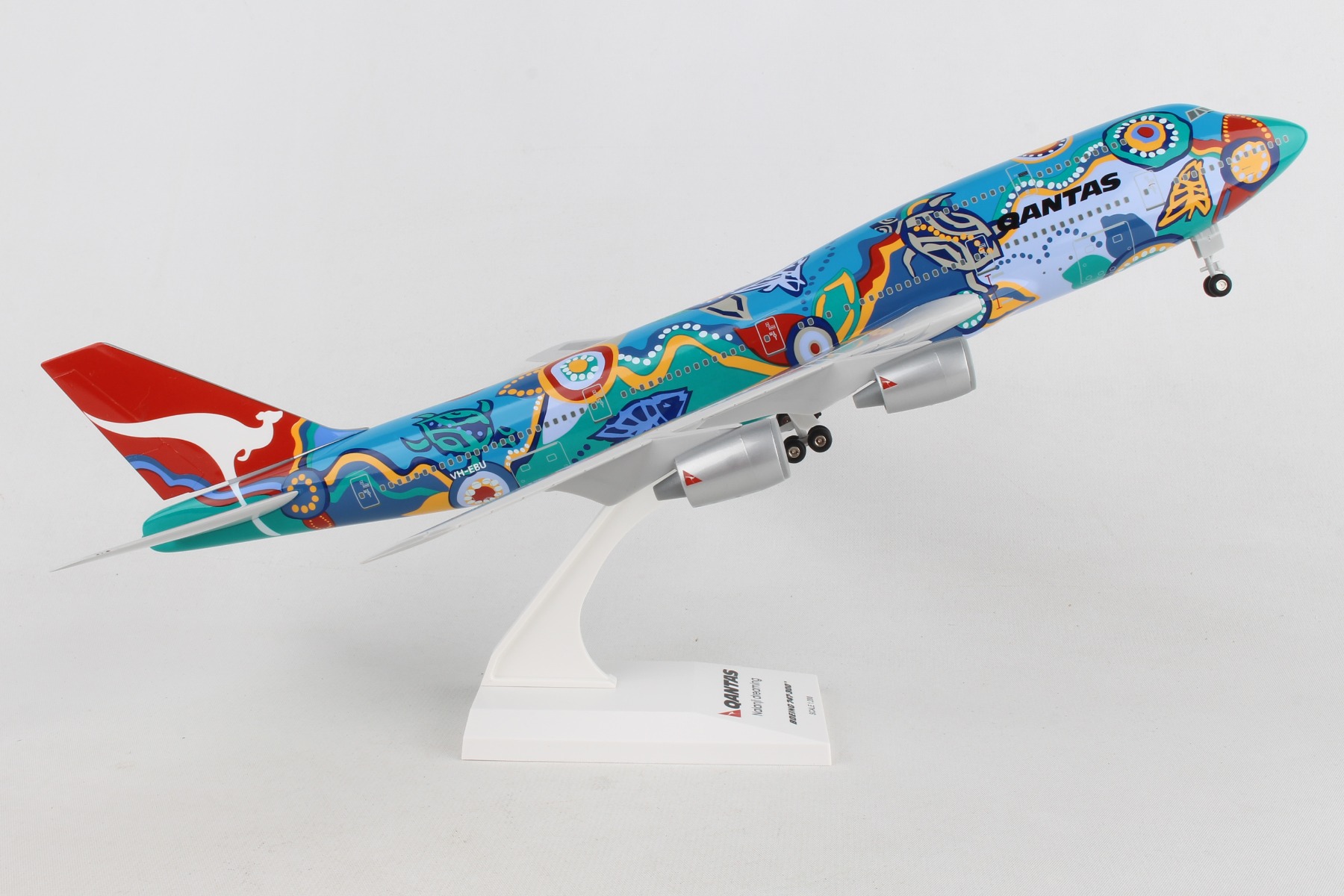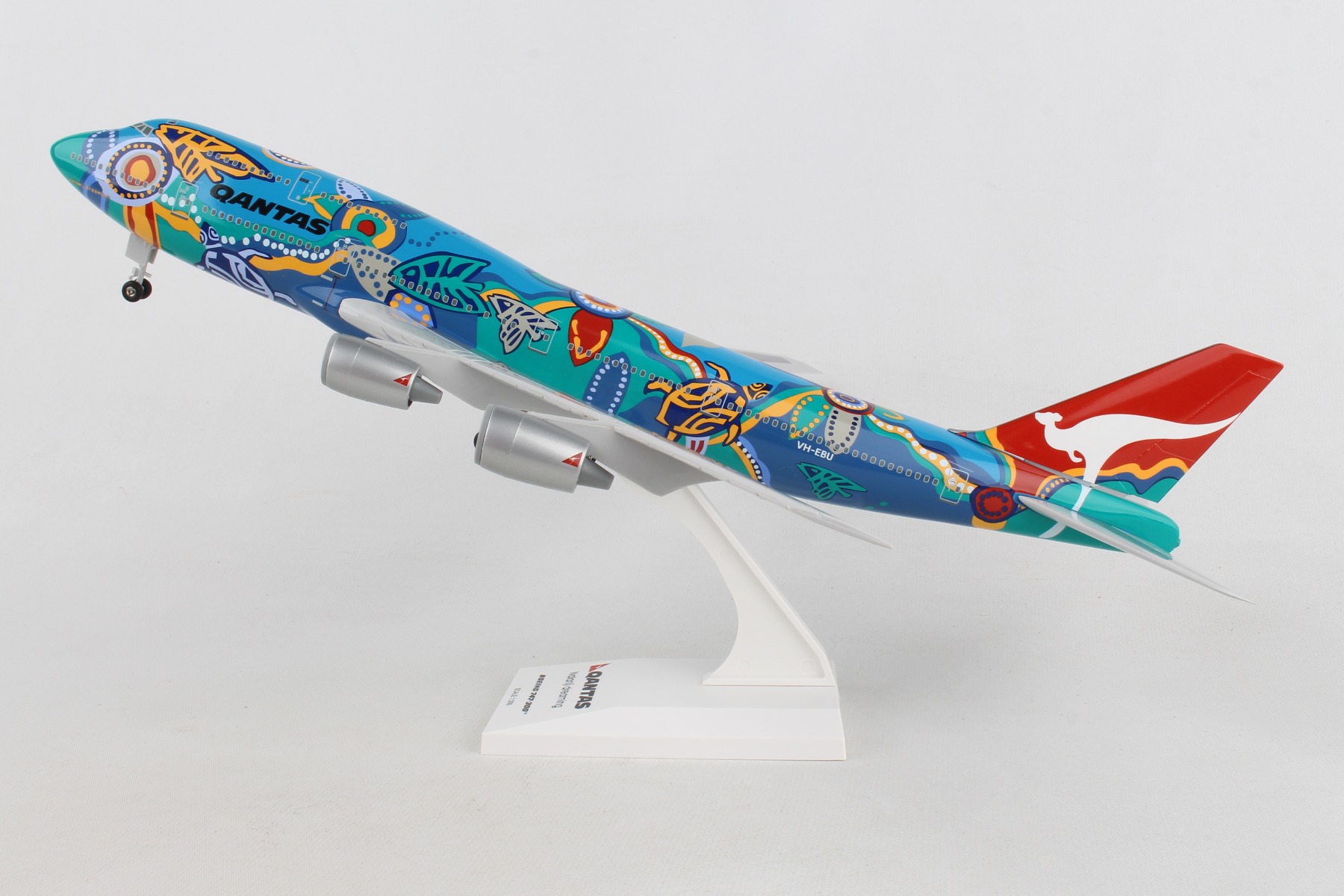SKYMARKS QANTAS NALANJI DREAMING 747-300 W/GEAR 1/200
SKYMARKS QANTAS NALANJI DREAMING 747-300 W/GEAR 1/200
Comprising superior quality, solid, substantial injection molded plastic components with a simple snap-fit design that allows for easy assembly without the need for glue, this very colorful SkyMarks 1/200 scale Qantas Boeing 747-300, named Nalanji Dreaming, measures approximately 13-7/8-inches long with a 12-inch wingspan and comes complete with Landing Gear and a Display Stand. According to Qantas, Nalanji Dreaming, which is a Yanyuwa word meaning "our place, and "is a celebration of the balance and harmony of nature in Australia," was unveiled in November 1995, and flew until 2005 to celebrate Qantas' 75th anniversary. An accurate, true-to-scale reproduction of the actual aircraft, the model is great for collectors and features authentic, highly detailed graphics and markings. Readily recognized around the world by its iconic large hump atop the front of its fuselage, the Boeing 747, nicknamed - Jumbo Jet - entered service in 1970 with Pan Am as the first wide-body airliner, and has primarily been used for long range passenger travel. Although capable of accommodating up to 416 passengers in three different classes, because this large, quad-engine jet was conceived in the mid-1960s, when supersonic transports were also concurrently on the drawing board, and viewed more favorably at the time as the likely successor for the future travel, Boeing engineers and Pan Am CEO, Juan Trippe opted for the Boeing 747 to be designed so that it could be readily converted into a freighter if required by merely retrofitting the fixed nose of the existing passenger aircraft with a large hinged cargo door. Consequently, if a passenger 747 aircraft were ever to be adapted as a cargo plane with a hinged cargo door, it would be much more cost effective and considerably easier to convert existing passenger aircraft into cargo aircraft if the cockpit were located above the nose, thus enabling the existing passenger 747s to continue flying as transformed cargo planes. Even though supersonic transports did not readily materialize for the most part, and did not supersede the Boeing 747 as initially envisioned, over the course of time, the Boeing 747 was not only embraced as a successful passenger and cargo aircraft, many passenger Boeing 747 aircraft were ultimately converted into cargo 747 aircraft, known as BCF - Boeing Converted Freighter(s) when it was no longer viable that they continue to be used as passenger aircraft. Visibly different than the preceding Boeing 747-100 and 747-200 models, which featured a stretched upper deck, the Boeing 747-300 also encompassed other revisions, including a straight staircase to the upper deck - instead of a spiral staircase that was employed on the earlier models - allowing the aircraft to accommodate more passengers, as well as some small aerodynamic changes, thus permitting the Boeing 747-300 to fly negligibly faster than the earlier -100 and -200 models. Swiss Air was the launch customer for the Boeing 747-300, which first went into service in March 1983. Although Boeing never built a freighter version of the Boeing 747-300, they did eventually convert older passenger 747-300 aircraft into freighters, known as BCF - Boeing Converted Freighter(s). A total of 81 Boeing 747-300s were delivered to the airlines, including the 747-300M - which carries cargo in the rear portion of the main deck, and the short-range, high capacity 747-300SR, which was manufactured to serve Japanese domestic markets. The Boeing 747-300 was replaced only a few years after it went into service by the more technologically advanced Boeing 747-400.
